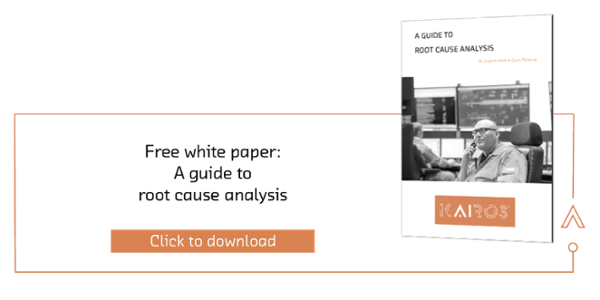HAZOP is a process for performing Hazards and Operability studies that was introduced in the 1970’s. It is a valuable structured way of addressing the possible hazards and operability problems when an asset potentially operates outside its original design conditions.
If we simplify the HAZOP study process it consists of four steps:
- Identifying a multidisciplined HAZOP team
- Identify the system boundaries (nodes) and HAZOP intentions
- Execute HAZOP Workshop(s) where operational variations (guide words) are considered, and hazards/failure points are documented
- Documentation and closing of the findings
The benefits of high-quality HAZOPs are numerous. Ideally all hazards are identified with clear recommendations how to ensure safe operation of the plant in all conditions.
Quality issues
However, it is important to understand that there is no such thing as a perfect HAZOP. The result is dependent on several factors:
- HAZOP team expertise – within operation, maintenance, and design
- HAZOP lead’s technical expertise and facilitation skills
- Scribe (or the responsible person documenting the findings) expertise
- Number of people in the room and team relations/safety culture/consistency
- Study and workshop duration, mental exhaustion
- Readily available, correct documentation
The list could easily be made longer. To conclude, the results are dependent on multiple human elements and there are little deterministic approaches. We cannot calculate a HAZOP and put two lines under the result as being the truth.
Propagation across multiple sub-systems (Nodes)
Complex process systems will often have influences (propagation) across multiple nodes (process areas), and this is difficult to capture in the current Sub-System (node) breakdown. For the established HAZOP study technique, it is important to reduce complexity and break it down into manageable systems, but this introduces problems when dealing with plant wide propagation. It can be hard to identify the inserted guidewords impact further down in the plant process and these evaluations are normally not addressed due to the complexity involved.
Closing the actions for follow up
Even if we could execute the perfect HAZOP, the real results will materialize after the findings have been rectified. Simply pinpointing a safety hazard does not remove it. Findings will have to be rectified to ensure that detection and safeguards are in place, and in some cases a new modified design is needed to close the identified issue. The HAZOP workshops are documented in HAZOP worksheets and the real work starts after the HAZOP has been performed and actions need to be closed.
Tying up the best people from operations
We have discussed the need for operational experienced people from plant operation in the workshops. The challenge is often that the best people are always busy and keeping them busy in HAZOP workshops will be a problem for the day-to-day operation.
Cost of HAZOPs
The process above is costly, but there is no good substitute for HAZOPs available today. The established process is widely used within petrochemical and energy industries, where the impacts of possible accidents are severe. The duration of HAZOPs can range from weeks, to in some cases, months. Developing a more cost-efficient way of doing HAZOPs might lead to that more industries can adopt using the proven technique.
Dealing with changes (Management of Change)
A HAZOP report or a HAZOP worksheet is valid as long as the verified process or operational procedures are not changed. This is the case for HAZOPs performed for both new plant design developed and for assets during operation. To capture design changes during a project, it is standard practice to perform new HAZOPs at the main decision gates. Typically, before detail design and before construction.
If the plant has been handed over to operations, it is vital to have a system to manage design changes over time (MoC). The MoC procedure should include specific criteria about the nature of the change, which determines if a design change HAZOP is required.
Some plants have incorporated requirements to perform regular re-HAZOPs to ensure any changes are captured and that introduction of possible new hazards are dealt with. The interval between re-HAZOPs is typically 4-5 years. However, there are different practices within the industries and organizations. In some cases, re-HAZOPs are never completed.
The ideal future of HAZOPs
What if we could find an efficient way to calculate the HAZOP worksheet and automatically identify cause, consequence, and verify related safeguards? It would be a much more efficient HAZOP workshop where the experts could focus on the most critical and/or complex cases, and complete simple exercise to agree on actions. There have been attempts to achieve this through rule-based systems and with the use of simulators.
We believe the future lies within qualitative physics AI where explainable digital twins can automate the work process. Kairos Technology believes in combining the physical laws used for the design and adding experience (from incident report, Root Cause Analysis, HAZOP reports) to provide instantaneous situational awareness. Using explainable AI models with process sensors for instantaneous root-cause analysis and propagation analysis will be a game changer in understanding and responding to safety risks.







